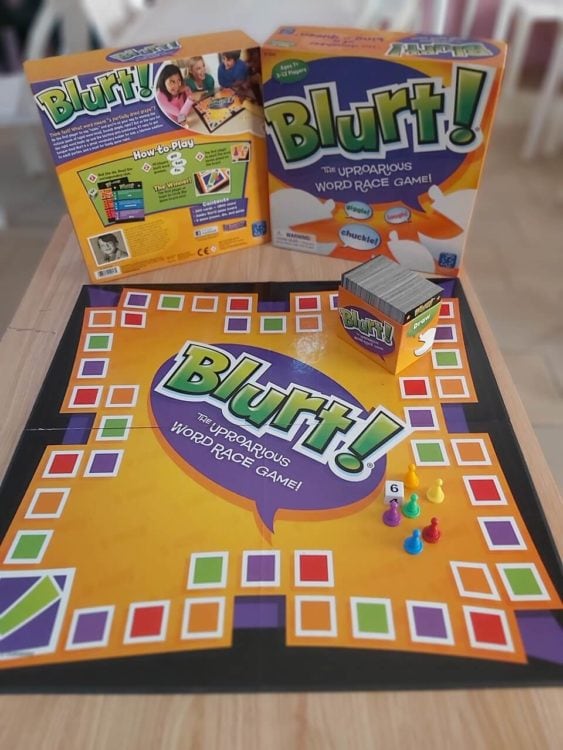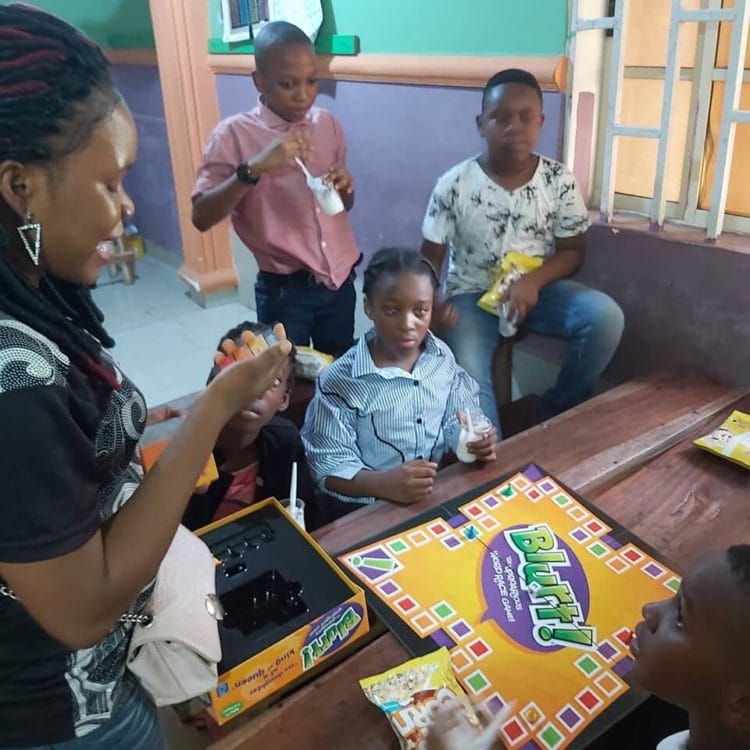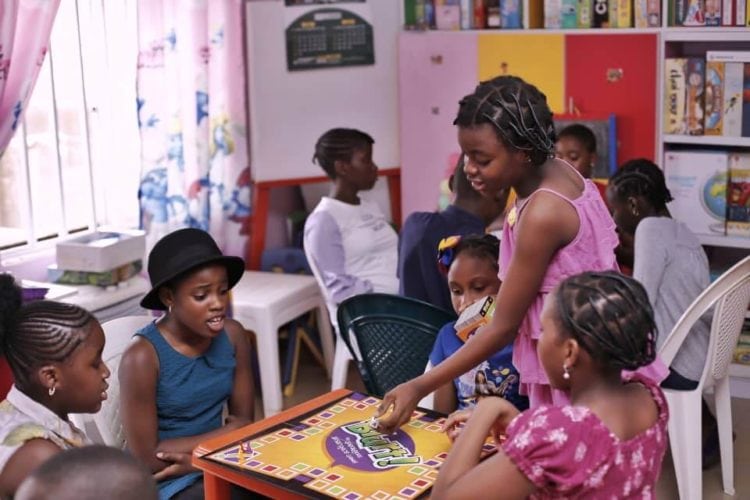
OBJECTIVE OF BLURT: To be the first to navigate your way around the board and get back to start. Blurt can be played in teams or as individuals.
NUMBER OF PLAYERS: 3 to 12 Players
COMPONENTS: 1 giant board, 300 double-sided cards bearing 1800 definitive clues in a card holder, 6 pawns, 1 die and a rule book
TYPE OF GAME: Party/Family Vocabulary Building Board Game
AUDIENCE: Ages 7 and Up
OVERVIEW OF BLURT
Blurt is an uproarious word race game where players are striving to give the most correct answers to clues read out to them to earn the right to move across the board.
SETUP
Place the board in the centre of the table alongside the deck of cards. Players choose pawns and place them on the start space.
The card holder has designated Draw and Discard sides, let the Draw side of the holder be visible.
Decide which side of the cards to ask questions from, one side has easier questions. Alternatively, let the Reader decide that.
Players roll the die to decide the first Reader. The player with the highest roll wins

GAMEPLAY
The Reader rolls the die to set the game in motion. The number rolled determines two things – the number of spaces the pawn can move on the board and which clue to read out.

Players blurt out the word they think correctly defines the clue. Players can blurt as many words as they can think of as there are no penalties for wrong answers.

If two players/teams answer correctly at the same time, another clue is read to ONLY the players who tied and the Reader judges the winner.
If you are not sure who was the first to answer correctly, another clue is read.
If no one gets the correct answer after a stipulated time, no one moves on the board and the next player (clockwise) becomes the Reade
r.
Younger kids variation
For the younger kids, no die is used, rather the kids are provided with paper and pencil. They also can play individually or in teams. This time around, a parent or teacher will be the Reader and will use the side with the stars as they have easier questions.
The players/teams do not blurt out the answers this time around, rather they write down their answers on the papers provided and the Reader checks for correct word and spelling.
Players who get the word and spell it correctly move four spaces, players who get the word but spell wrongly move three spaces on the board and player who don’t get the word do not move this game pieces.
The winner is the player or team to get back to start first but if there is a tie, the player with the least spelling mistakes wins.
Other variations also abound for adult play which makes the game more challenging.
SCORING
A player moves the number of times shown on the die if he/she gets the correct question.
END OF GAME
The first player or team to return to the start space after circling the game board wins the game. An exact roll of the die is not needed.